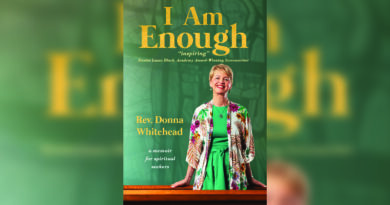Biblical Art Museum to Debut ‘Via Dolorosa’

Art lovers and religious folk alike will have a new way to admire the story of the Gospel at the Museum of Biblical Art.
The museum broke ground on a new “Via Dolorosa” sculpture garden on April 26 that will be completed in the fall, but planning and fundraising for the project were long in the works, starting with a kickoff party hosted by Faye Briggs.
“We’d been looking for a pilgrimage piece for a long time,” curator and co-director Scott Peck said. “We’ve wanted something outdoors that would attract people, and this makes sense.”
Construction of the installment, which will run along the north side of the museum, began in June.
The statues will be featured in 14 different stations meant to represent the various stages of Jesus’ crucifixion, and one final sculpture, bringing the total to 15 pieces.
“Four years ago, the idea began,” Peck said. “But the past three years have been to raise money and execute the plan.”
The path of the 14 stations features various garden elements such as benches along the way. It also features Roman colonnades to mimic the Italianate feel.
The installment will also include a donor courtyard, highlighting contributors on a granite plaque.
“The process began as a series of meetings over the course of probably two years, trying to get an architectural design and a landscape design that we liked,” general contractor and board president Kirk Kibler said.
The Mediterranean-style, life-sized bronze statues were crafted by sculptor Gib Singleton, who died shortly after their construction.
“My greatest dream has been to build the Stations of the Cross sculptures since I was 16 years old, and really, even before that,” Singleton said in Sacred Sculpture: The Religious Art of Gib Singleton. “Something has pushed me in this direction for 70 years, I guess.”
A resident of Santa Fe, N.M., Singleton built the original set for his gallery there, run by Paul Zueger.
Literally, “via dolorosa” means “the way of suffering,” and the sculptures depict a realism that echoes Singleton’s own experience with illness as well as the physical trials of Jesus.
“One of the big questions is how the community would respond to this,” Peck said. “Would they really be interested? Would they really get excited about it? And people are really starting to get excited as the plans are coming together.”
The stations begin with “Judgment” and end with “Entombed.” Each station represents a different stage in the narrative and emotional trajectory.
Museum officials feel that their location on Park Lane will allow many people to see the new installment.
“The majority of the people who come into the museum are from drive-bys,” Peck said. “We’ve got one of the busiest intersections.”
Though the project has secured a significant portion of its funding through foundations and individual donations, sponsorships are still available for benches and garden elements such as trees and lighting.
The museum is also seeking in-kind donations for similar garden features.
“It’s been a big variety of fundraising,” senior development officer Patricia Martin said.
Kibler estimates that the installment process will take roughly 90 days. The gardens will then be free to the public upon completion.
“I have a lot of belief in what the museum does,” Kibler said. “I know it’s a great thing and it’s going to be great for the community.”
This story appears in the July issue of Preston Hollow People, on stands now.








